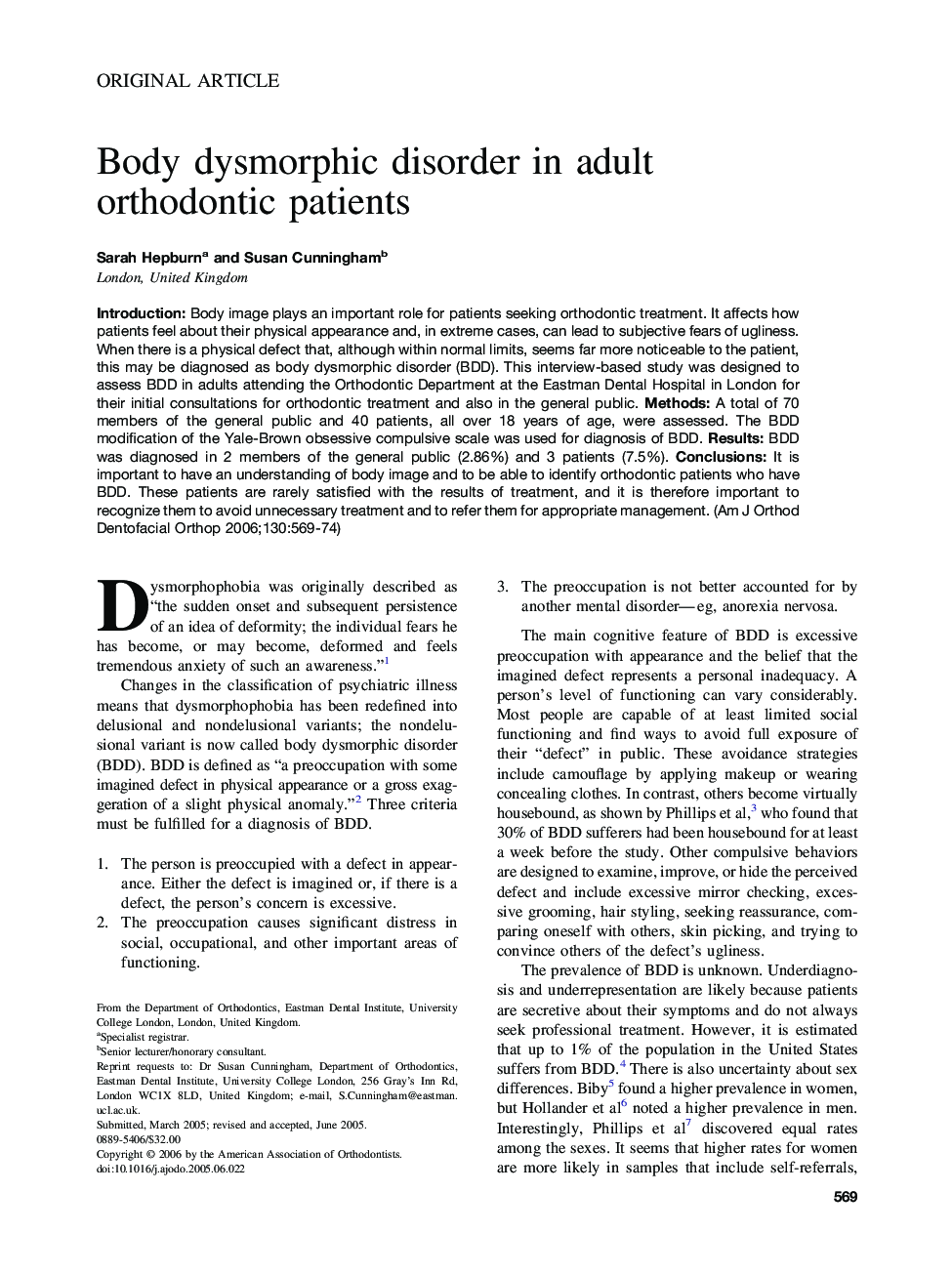| Article ID | Journal | Published Year | Pages | File Type |
|---|---|---|---|---|
| 3119877 | American Journal of Orthodontics and Dentofacial Orthopedics | 2006 | 6 Pages |
Introduction: Body image plays an important role for patients seeking orthodontic treatment. It affects how patients feel about their physical appearance and, in extreme cases, can lead to subjective fears of ugliness. When there is a physical defect that, although within normal limits, seems far more noticeable to the patient, this may be diagnosed as body dysmorphic disorder (BDD). This interview-based study was designed to assess BDD in adults attending the Orthodontic Department at the Eastman Dental Hospital in London for their initial consultations for orthodontic treatment and also in the general public. Methods: A total of 70 members of the general public and 40 patients, all over 18 years of age, were assessed. The BDD modification of the Yale-Brown obsessive compulsive scale was used for diagnosis of BDD. Results: BDD was diagnosed in 2 members of the general public (2.86%) and 3 patients (7.5%). Conclusions: It is important to have an understanding of body image and to be able to identify orthodontic patients who have BDD. These patients are rarely satisfied with the results of treatment, and it is therefore important to recognize them to avoid unnecessary treatment and to refer them for appropriate management.
